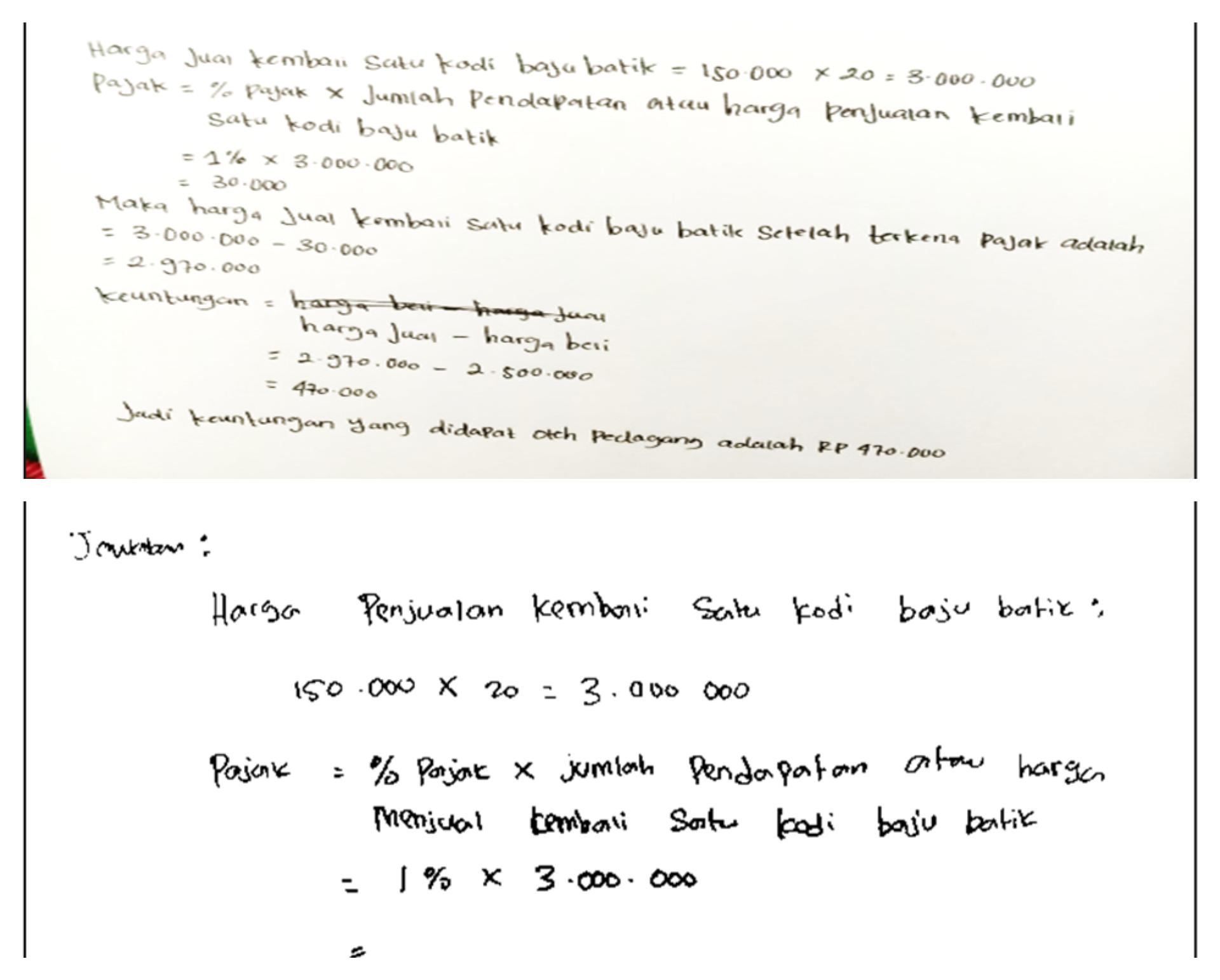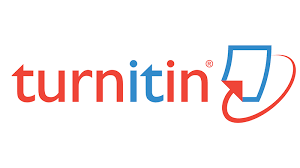PROFIL PEMECAHAN MASALAH PESERTA DIDIK DITINJAU DARI SELF EFFICACY
DOI:
https://doi.org/10.31100/histogram.v9i2.3497Keywords:
Problem-Solving Profile, Self-Efficacy, Social ArithmeticAbstract
ABSTRAK
Kemampuan pemecahan masalah matematis peserta didik masih rendah dan sangat dipengaruhi oleh faktor internal seperti self-efficacy. Penelitian ini penting dilakukan untuk mendeskripsikan profil pemecahan masalah peserta didik berdasarkan tingkat self-efficacy. Penelitian ini menggunakan pendekatan kualitatif deskriptif yang dilaksanakan pada peserta didik kelas IX SMP Negeri 1 Sausu tahun ajaran 2023/2024. Subjek dipilih melalui angket self-efficacy yang mengelompokkan peserta didik ke dalam kategori tinggi dan rendah. Data diperoleh melalui tes pemecahan masalah aritmetika sosial dan wawancara mendalam, kemudian dianalisis dengan triangulasi untuk memastikan keabsahan data. Hasil penelitian menunjukkan bahwa: 1) pada tahap memahami masalah, peserta didik dengan self-efficacy tinggi mampu menangkap makna soal, sedangkan peserta didik dengan self-efficacy rendah hanya mengulang informasi tanpa pemahaman, 2) pada tahap merencanakan, kedua kategori menyusun strategi yang sama, yaitu menghitung pajak penjualan dan keuntungan, 3) pada tahap melaksanakan, peserta didik dengan self-efficacy tinggi dapat mengikuti rencana dengan tepat, sedangkan self-efficacy rendah mengalami kesulitan pada perhitungan pajak, dan 4) pada tahap memeriksa kembali, self-efficacy tinggi melakukan evaluasi akhir, sementara self-efficacy rendah tidak melakukannya. Penelitian ini memberikan gambaran mendalam mengenai perbedaan proses pemecahan masalah berdasarkan tingkat self-efficacy, yang dapat menjadi rujukan bagi guru dalam merancang strategi pembelajaran yang lebih tepat.
ABSTRACT
Students’ mathematical problem-solving ability remains relatively low and is strongly influenced by internal factors such as self-efficacy. This study is important to describe students’ problem-solving profiles based on their level of self-efficacy. The research employed a descriptive qualitative approach and was conducted with ninth-grade students of SMP Negeri 1 Sausu in the 2023/2024 academic year. Subjects were selected using a self-efficacy questionnaire that classified students into high and low categories. Data were collected through social arithmetic problem-solving tests and in-depth interviews, and then analyzed using triangulation to ensure data validity. The findings revealed that: 1) at the stage of understanding the problem, students with high self-efficacy were able to grasp the meaning of the problem, whereas students with low self-efficacy only repeated the given information without deeper understanding, 2) at the planning stage, both groups developed the same strategy, namely calculating sales tax and profit, 3) at the implementation stage, students with high self-efficacy followed the plan accurately, while students with low self-efficacy encountered difficulties in calculating sales tax, and 4) at the reviewing stage, students with high self-efficacy conducted final evaluations, while those with low self-efficacy did not. This study provides valuable insights into differences in problem-solving processes based on students’ self-efficacy levels, serving as a reference for teachers in designing more effective learning strategies.
References
Adetia, R., & Adirakasiwi, A. G. (2022). Kemampuan Pemecahan Masalah Matematis Ditinjau dari Self-Efficacy Siswa. Jurnal Educatio, 8(2), 526–536. https://doi.org/10.31949/educatio.v8i2.2036
Alifia, N. N., & Rakhmawati, I. A. (2018). Kajian Kemampuan Self-efficacy Matematis Siswa dalam Pemecahan Masalah Matematika. Jurnal Elektronik Pembelajaran Matematika, 5(1), 44–54. https://jurnal.uns.ac.id/jpm/article/view/26024/18242
Andayani, F., & Lathifah, A. N. (2019). Analisis Kemampuan Pemecahan Masalah Siswa SMP dalam Menyelesaikan Soal Pada Materi Aritmatika Sosial. Jurnal Cendekia: Jurnal Pendidikan Matematika, 3(1), 1–10. https://doi.org/10.31004/cendekia.v3i1.78
Fitri, I. (2017). Peningkatan Self Efficacy terhadap Matematika dengan Menggunakan Modul Matematika Kelas Viii Smp Negeri 2 Bangkinang. Journal Cendekia: Jurnal Pendidikan Matematika, 1(2), 25–34. https://doi.org/10.31004/cendekia.v1i2.17
Handayani, T., Sutiarso, S., & Firdaus, R. (2023). Pengaruh Media Pembelajaran Berbasis Flipaclip terhadap Kemampuan Pemecahan Masalah Matematis dan Kemandirian Belajar Siswa. Histogram: Jurnal Pendidikan Matematika, 7(1), 350–366. https://doi.org/10.31100/histogram.v7i1.2497
Lesi, A. N., & Nuraeni, R. (2021). Perbedaan Kemampuan Pemecahan Masalah Matematis dan Self-Confidence Siswa antara Model TPS dan PBL. PLUSMINUS: Jurnal Pendidikan Matematika, 1(2), 249–262. https://doi.org/10.31980/plusminus.v1i2.899
Lestari, K. E., & Yudhanegara, M. R. (2018). Penelitian Pendidikan Matematika. Cetakan Pertama, Refika Aditama.
National Council of Teachers of Mathematics (NCTM). (2000). Principles and Standards for School Mathematics. Reston, VA: NCTM.
Pasandaran, R. F., & Baharuddin, M. R. (2016). Profil Berpikir dalam Menyelesaikan Masalah Aljabar Berpandu pada Taksonomi Solo Ditinjau dari Tingkat Efikasi Diri pada Siswa SMP Al-azhar Palu. Pedagogy: Jurnal Pendidikan Matematika, 1(1), 86–96.
Polya, G. (1973). How to Solve it: a new aspect of mathematical method. Princeton University Press.
Ramadhany, N., Tampa, A., & Upu, H. (2025). Systematic Literature Review: the Effectiveness of Using The Problem-Based Learning Model in Improving Problem-Solving Skills. MATHLINE: JURNAL MATEMATIKA AND PENDIDIKAN MATEMATIKA, 10(3), 703–717. https://doi.org/10.31943/mathline.v10i3.859
Sabrina, N., & Hrp, N. A. (2023). Pengaruh Model Pembelajaran Quantum Learning terhadap Kemampuan Pemecahan Masalah Matematis pada Siswa Kelas IX SMPS IMELDA. Histogram: Jurnal Pendidikan Matematika, 7(1), 725–737. https://doi.org/10.31100/histogram.v7i1.2803
Siedlecki, S. L. (2020). Understanding Descriptive Research Designs and Methods. Clinical Nurse Specialist, 34(1), 8–12. https://doi.org/10.1097/NUR.0000000000000493
Siregar, R. F., & Ramadhani, R. (2023). Pengembangan Lembar Kerja Peserta Didik Berbantuan Canva untuk Meningkatkan Kemampuan Pemecahan Masalah Siswa Kelas X RPL SMK N 1 Lubuk Pakam. Histogram: Jurnal Pendidikan Matematika, 7(2), 159–172. https://doi.org/10.31100/histogram.v7i2.3317
Suharnita, E., Kartini, K., Saragih, S., & Roza, Y. (2023). Deskripsi Kebutuhan Bahan Ajar Lingkaran untuk Memfasilitasi Kemampuan Pemecahan Masalah Matematis. Histogram: Jurnal Pendidikan Matematika, 7(1), 326–337. https://doi.org/10.31100/histogram.v7i1.2488

Downloads
Published
Issue
Section
Citation Check
License
Copyright (c) 2025 Ni Luh Yastuti

This work is licensed under a Creative Commons Attribution-NonCommercial-NoDerivatives 4.0 International License.
Please find the rights and licenses in Histogram: Jurnal Pendidikan Matematika. By submitting the article/manuscript, the author(s) accept this policy.
1. License
The non-commercial use of the article will be governed by the Creative Commons Attribution license as currently displayed on Creative Commons Attribution-ShareAlike 4.0 International.
2. Author's Warranties
The author warrants that the article is original, written by a stated author(s), has not been published before, contains no unlawful statements, does not infringe the rights of others, is subject to copyright that is vested exclusively in the author and free of any third party rights, and that any necessary written permissions to quote from other sources have been obtained by the author(s).
3. User Rights
Histogram: Jurnal Pendidikan Matematika's spirit is to disseminate articles published for free. Under the Creative Commons license, Histogram: Jurnal Pendidikan Matematika permits users to copy, distribute, display, and perform the work for non-commercial purposes only. Users will also need to attribute authors and Histogram: Jurnal Pendidikan Matematika when distributing works in the journal.
4. Rights of Authors
Authors retain all their rights to the published works, such as (but not limited to) the following rights;
- Copyright and other proprietary rights relating to the article, such as patent rights,
- The right to use the substance of the article in one's future works, including lectures and books,
- The right to reproduce the article for one's purposes,
- The right to self-archive the article,
- The right to enter into separate, additional contractual arrangements for the non-exclusive distribution of the article's published version (e.g., post it to an institutional repository or publish it in a book), with an acknowledgment of its initial publication in this journal (Histogram: Jurnal Pendidikan Matematika).
5. Co-Authorship
If other authors jointly prepared the article, any author submitting the manuscript warrants that all co-authors have authorized them to agree on this copyright and license notice (agreement) on their behalf and agree to inform their co-authors of the terms of this policy. Histogram: Jurnal Pendidikan Matematika will not be held liable for anything arising from the author(s) internal dispute. Histogram: Jurnal Pendidikan Matematika will only communicate with the corresponding author.
6. Royalties
This agreement entitles the author to no royalties or other fees. To such an extent that it is legally permissible, the author waives their right to collect royalties relative to the article regarding any use by Histogram: Jurnal Pendidikan Matematika.
7. Miscellaneous
Histogram: Jurnal Pendidikan Matematika will publish the article (or have it published) in the journal if the editorial process is completed. Histogram: Jurnal Pendidikan Matematika h editors may modify the article to a style of punctuation, spelling, capitalization, referencing, and usage that deems appropriate. The author acknowledges that the article may be published to be publicly accessible, and such access will be free of charge for the readers, as mentioned in point 3.




